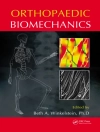The first edition of this publication was aimed at defining the current concepts of trauma induced coagulopathy by critically analyzing the most up-to-date studies from a clinical and basic science perspective. It served as a reference source for any clinician interested in reviewing the pathophysiology, diagnosis, and management of the coagulopathic trauma patient, and the data that supports it. By meticulously describing the methodology of most traditional as well as state of the art coagulation assays the reader is provided with a full understanding of the tests that are used to study trauma induced coagulopathy. With the growing interest in understanding and managing coagulation in trauma, this second edition has been expanded to 46 chapters from its original 35 to incorporate the massive global efforts in understanding, diagnosing, and treating trauma induced coagulopathy. The evolving use of blood products as well as recently introduced hemostatic medications is reviewed in detail. The text provides therapeutic strategies to treat specific coagulation abnormalities following severe injury, which goes beyond the first edition that largely was based on describing the mechanisms causing coagulation abnormalities.
Trauma Induced Coagulopathy 2nd Edition is a valuable reference to clinicians that are faced with specific clinical challenges when managing coagulopathy.
Cuprins
Historical Perspective of Trauma Induced Coagulopathy.- Epidemiology of Hemorrhage-related Mortality.- Cell-Mediated Hemostasis.- Thrombin-Antithrombin System.- Physiology of Hemostasis: Plasmin-antiplasmin system.- Thrombin Formation.- Platelets.- Fibrinogen.- Defining and Assessing the Endotheliopathy of Trauma and its Implications on Trauma Induced Coagulopathy and Trauma Related Outcomes.- Protein C.- Fibrinolysis Dysregulation following Trauma.- Complement System.- Neutrophils, Inflammation and Innate Immunity in Trauma-Induced Coagulopathy.- Disseminated Intravascular Coagulation.- Grading Clinical Coagulopathy and Predicting Massive Transfusion.- Prothrombin and Partial Thromboplastin Time.- Fibrinogen Assays.- Rotational Thromboelastometry (ROTEM®).- Thromboelastography (TEG® 5000 and TEG® 6s Hemostasis Analyzers with TEG Manager® Software).- Red Blood Cell Transfusions.- Plasma Transfusion.- Cryoprecipitate/ Fibrinogen Concentrate Transfusions.- Platelet Transfusion.- Whole Blood for the Resuscitation of Massively Bleeding Civilian Patients.- Adjunct Factor Replacement .- Anti-fibrinolytics.- Ratio Driven Massive Transfusion Protocols.- Goal-Directed Massive Transfusion Management.- Pre-Hospital Resuscitation.- Venous Thromboembolism after Trauma.- Fibrinolysis Shutdown and Venous Thromboembolism.- Congenital and Acquired Hypercoagulable States.- Pediatrics.- Traumatic Brain Injury-Induced Coagulopathy.- Blunt Solid Organ Injury: A Call for Timely Chemoprophylaxis in the Setting of Early Hypercoagulability.- Pregnancy.- Liver Failure.- Pulmonary Coagulation in the Pathogenesis of Trauma-Associated Acute Respiratory Distress Syndrome.- Management of Chronically Anticoagulated Patients.- Randomized Controlled Trials: Informing Clinical Practice for Traumatically Injured Patients.- The Quantra® System and SEER Sonorheometry.- Dried Plasma for Trauma Resuscitation.- Synthetic Blood Substitutes.- Flow-Based Coagulation and Fibrinolysis Assays.- Animal Models of Coagulopathy.- Applications of Viscoelastic Hemostatic Assays at the Site of Care: Considerations and Implications.
Despre autor
Hunter B. Moore
Transplant Surgery Fellow
Department of Surgery
University of Colorado
Aurora, CO
USA
Ernest E. Moore
Department of Surgery
University of Colorado Denver
Ernest E Moore Shock Trauma Center at Denver Health
Denver, CO
USA
Matthew D. Neal
Department of Surgery
University of Pittsburgh Medical Center
Pittsburgh, PA
USA












